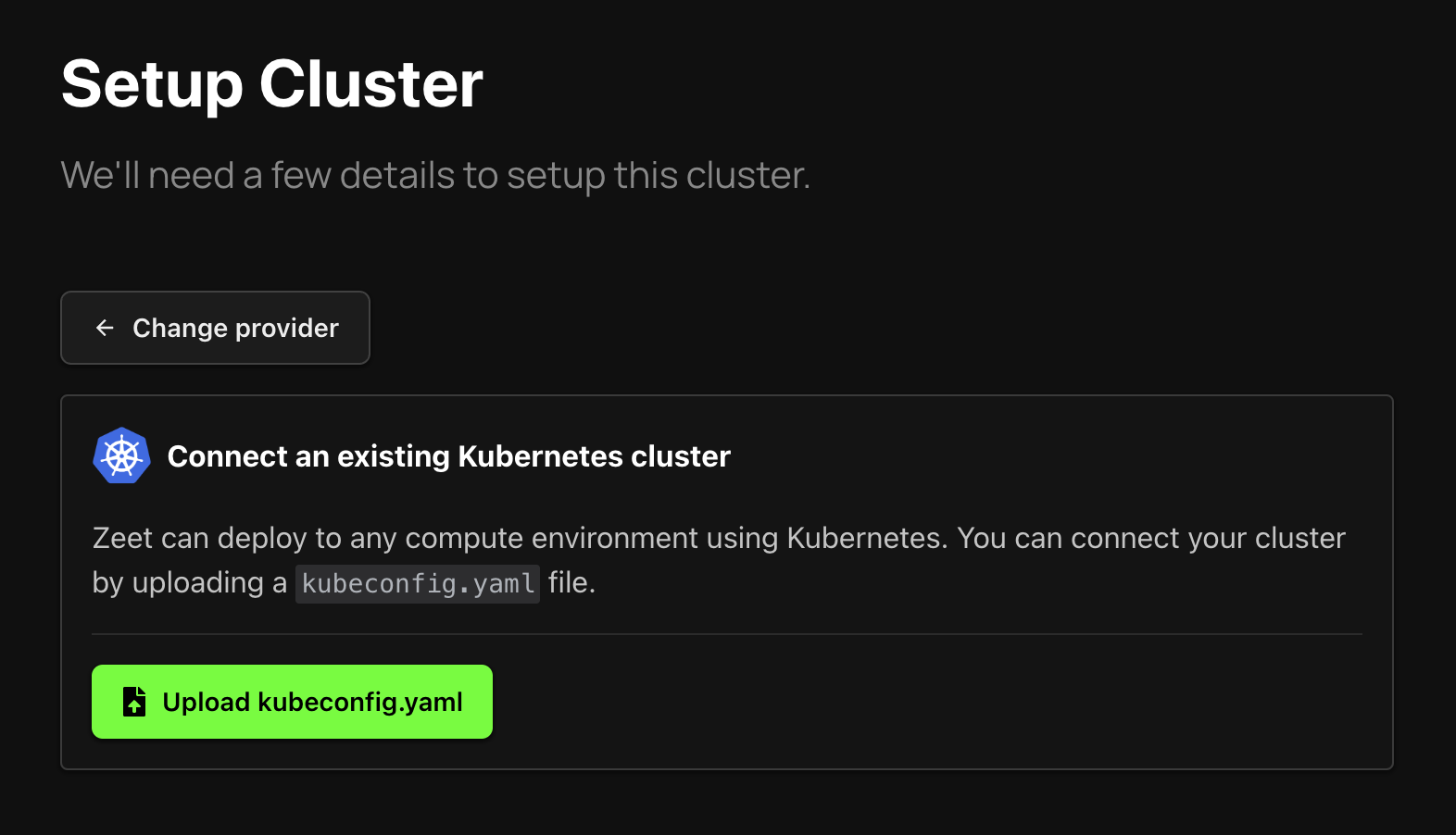AWS EKS Integration Guide with Zeet
This guide outlines the steps to integrate Amazon Web Services Elastic Kubernetes Service (EKS) with Zeet. It includes instructions for installing necessary cluster components and connecting your EKS cluster with Zeet.
1. Installing Cluster Components
Integrating AWS EKS with Zeet requires setting up various components to enhance the functionality and manageability of your Kubernetes cluster.
Cluster Components Manifests
Find all necessary files and templates in our GitHub repository: zeet-dev/zeet-cloud-aws. This repository hosts Terraform scripts and Kubernetes configurations needed for integration.
Parameters Needed
Key parameters for setup include:
- AWS_REGION: The AWS region for your services.
- AWS_ACCOUNT_ID: Your unique AWS account ID.
- DNS_ZONE: The AWS Route 53 hosted zone ID for DNS challenges.
- CLUSTER_NAME: The name (AWS identifier) of your EKS cluster.
- CLUSTER_DOMAIN: Your Kubernetes cluster's domain name.
- PROMETHEUS_AUTH: Basic authentication credentials for Prometheus, encoded in base64.
Each parameter is vital for effectively configuring your cluster components.
2. Connecting Your Cloud Account with Zeet (Optional)
After setting up the cluster components, you might choose to connect your AWS account with Zeet. This step allows Zeet to access your cloud resources.
Note: This step is only needed if you want Zeet to interact with your AWS account. If you plan to manage resources solely within your EKS cluster, you can skip this step.
For more information, visit Zeet AWS Integration Documentation.
3. Connecting Your EKS Cluster with Zeet
Create a Service Account for Zeet with Cluster Access
Zeet requires a service account with a role binding to manage your cluster. Use the following manifest to create a service account:
To create a kubeconfig file from a service account, follow this guide: Creating kubectl config file for service account.
Connect Your Cluster with Zeet
Go to the Zeet cluster connection page: Connect Cluster.

Upload the Kubeconfig File
